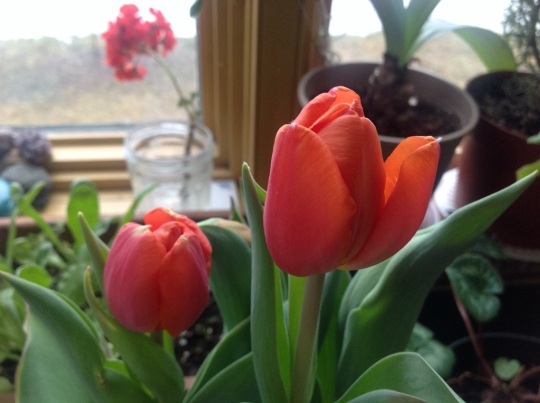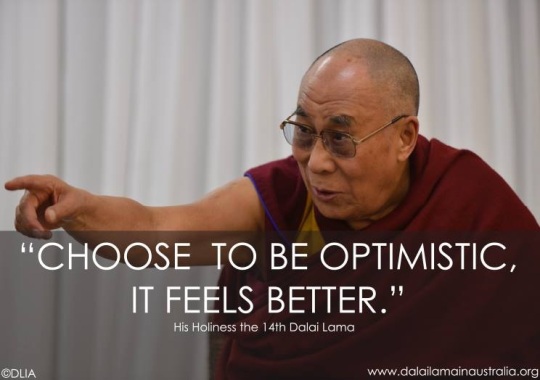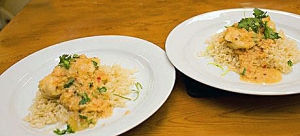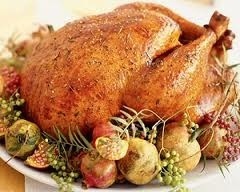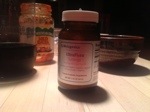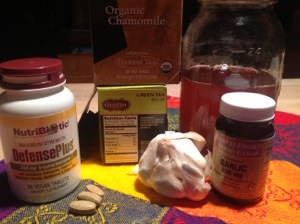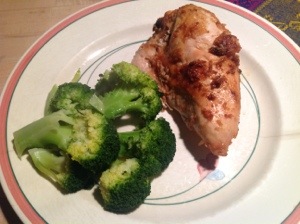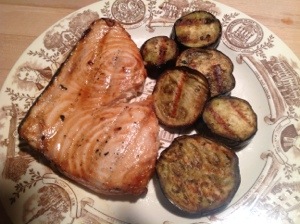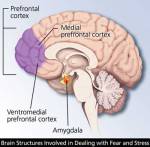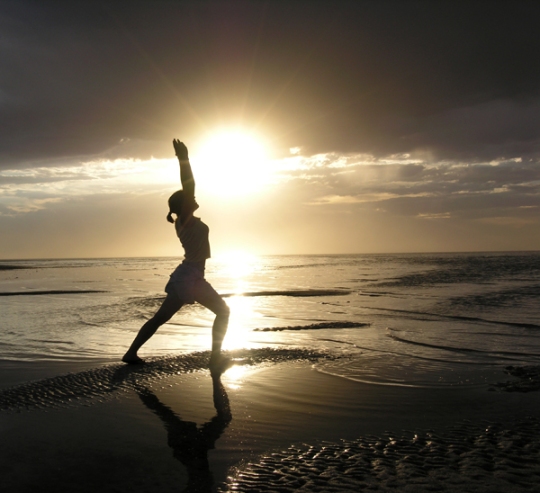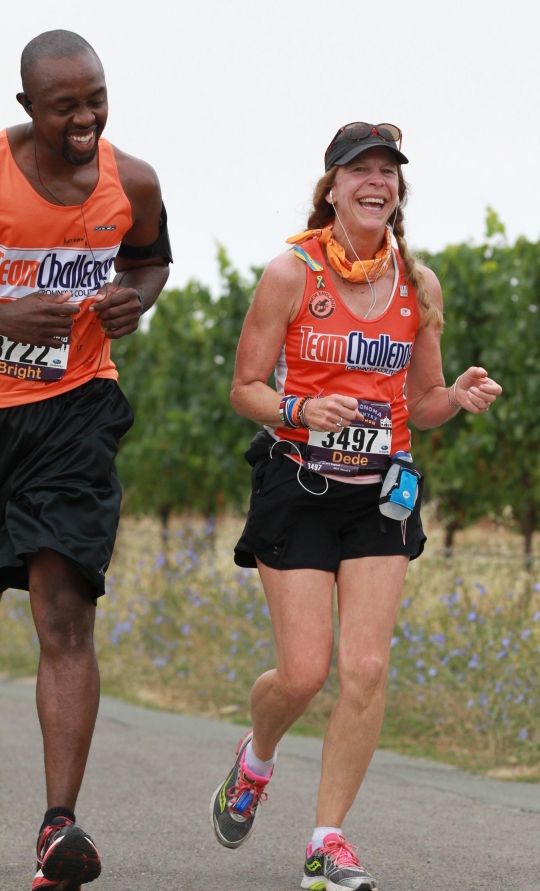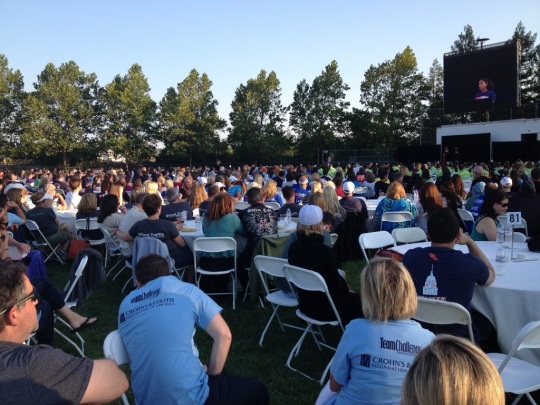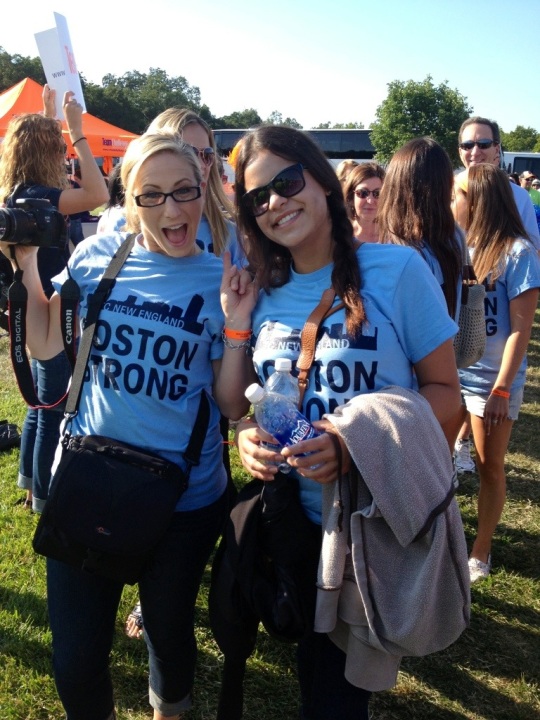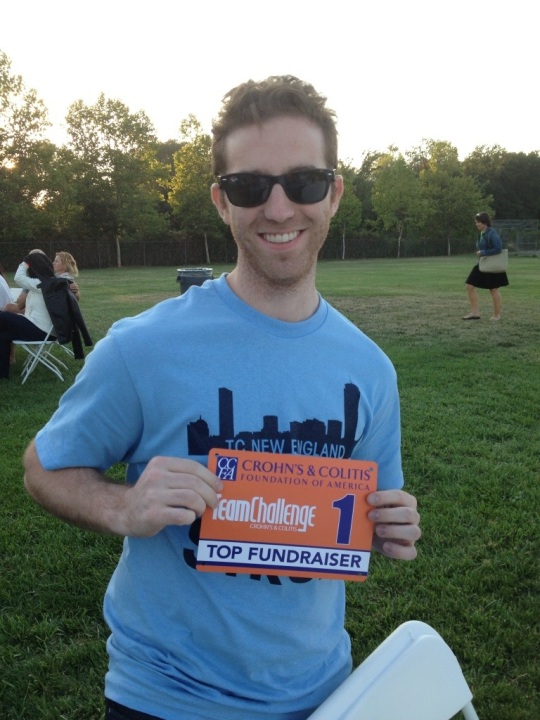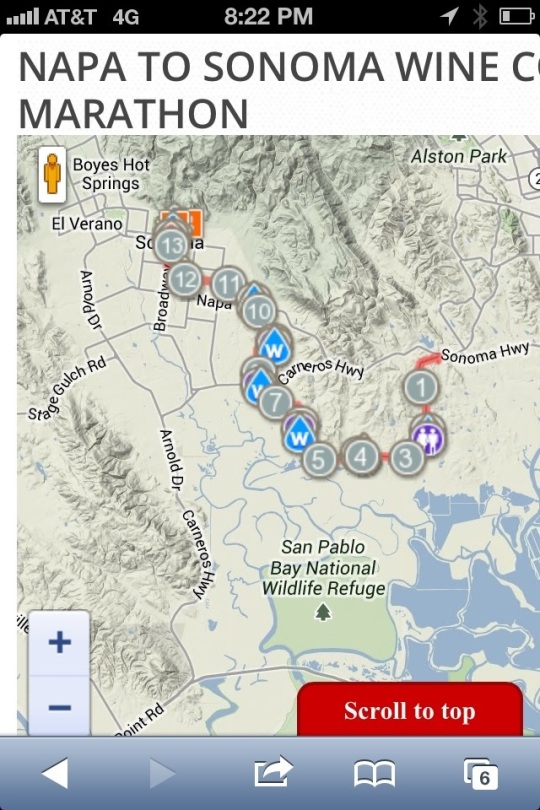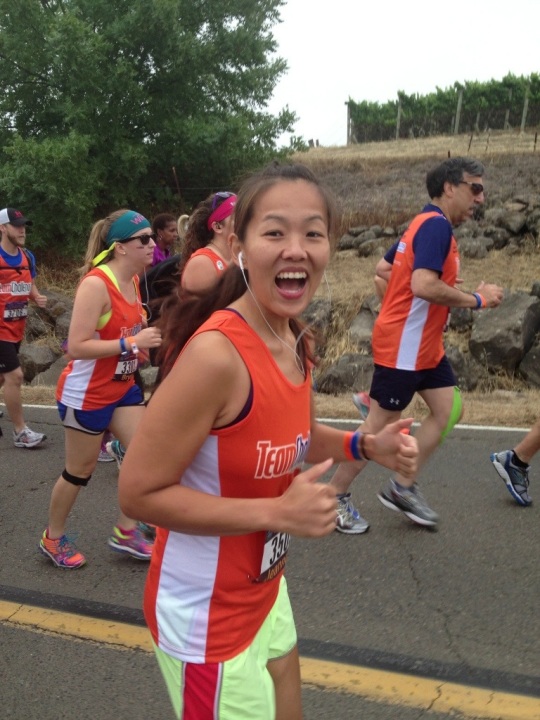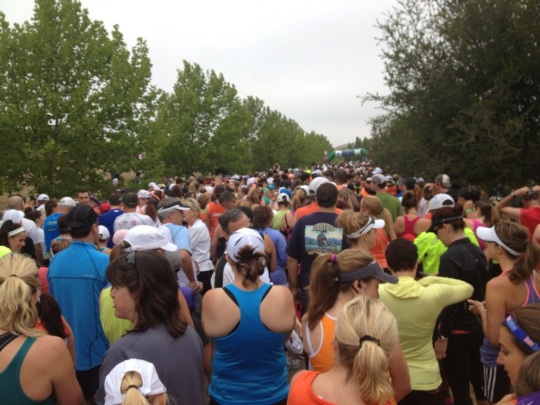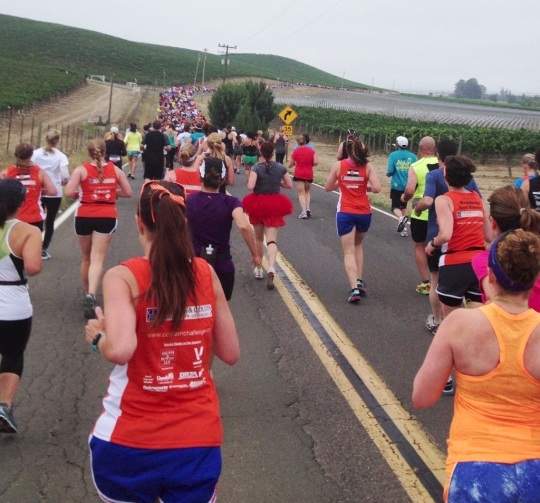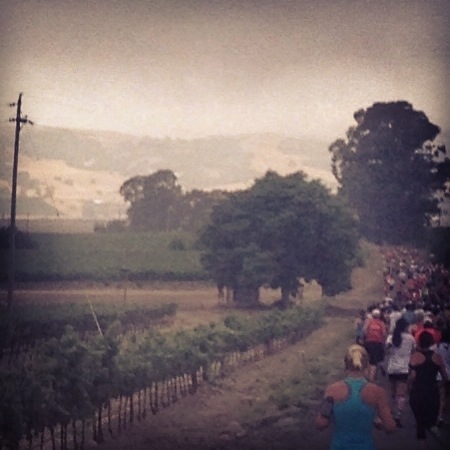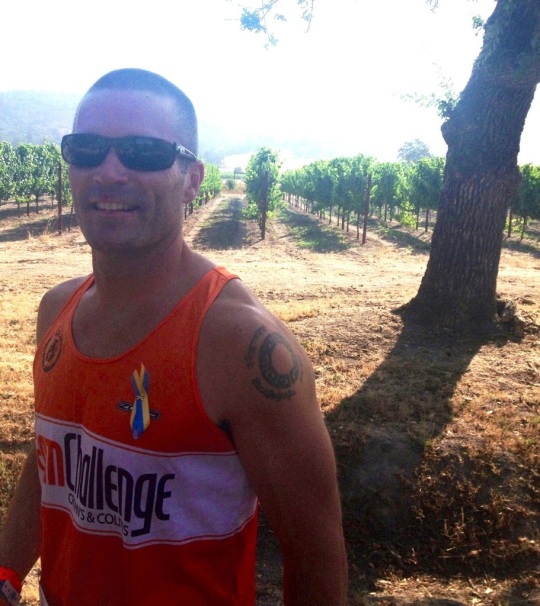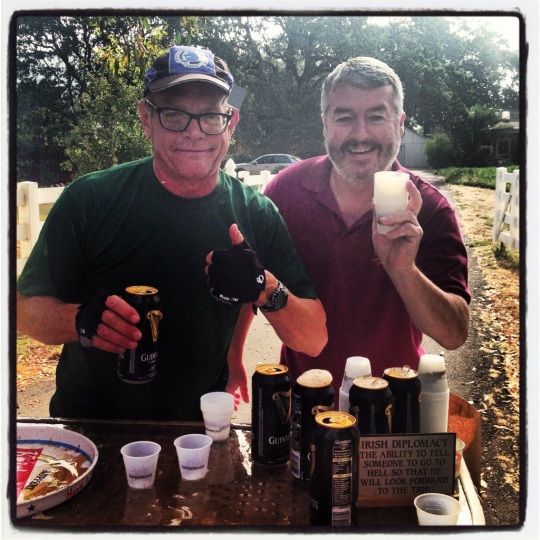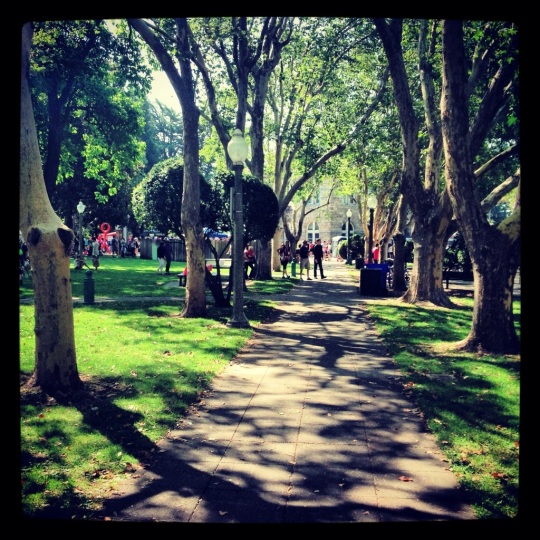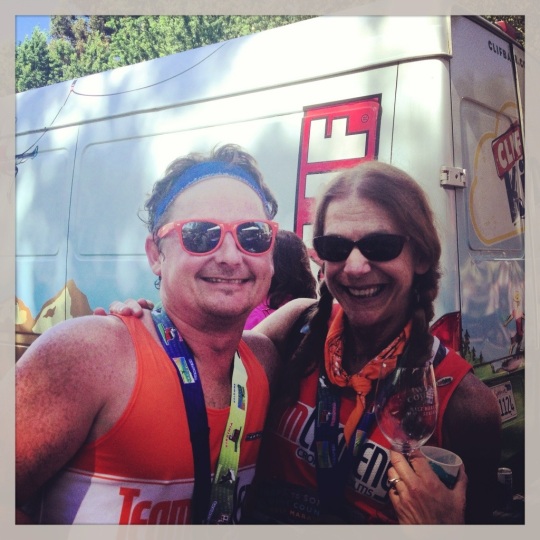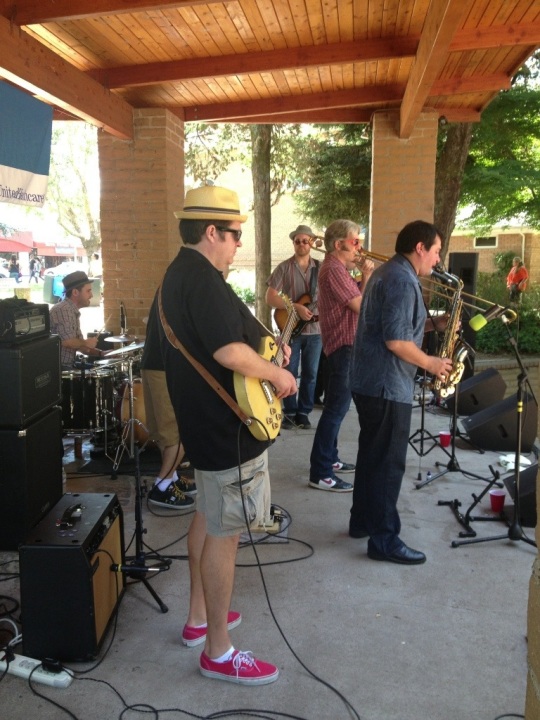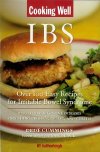In some human diseases, the wrong mix of bacteria seems to be the trouble.
I recently discovered a new blog that is specifically for Chronic Fatigue Syndrome and Fibromyalgia. It is called Health Rising and the link is below.
There are articles that explore gut health and microbiota by Ken Lassesen, that really explain the importance on overall homeostasis for everyone, whether you have Crohn’s, colitis, IBS, IBD, Celiac, etc.
I am on a strict diet of no dairy, no grains, no sugar. Supplements include probiotics and turmeric. I am really healthy and haven’t had symptoms for almost eight years! I did have a partial bowel resection, in 2006, that changed my life and set me on a path toward wellness— that is when I wrote my book because I was disillusioned by the recommendations of my GI doctors who said I should take heavy-duty, autoimmune-suppressing drugs.
Read more: Bacterial Resistance, Infection and Chronic Fatigue Syndrome: Fighting Infections Pt. I http://www.cortjohnson.org/blog/2014/03/26/bacterial-resistance-infection-chronic-fatigue-syndrome-fighting-infections-pt-1/
~~~
~
In some human diseases, the wrong mix of bacteria seems to be the trouble, Part 2.
A recent NPR story on gut bacteria and Crohn’s disease really impressed me, so I want to share it in its entirety here on my blog!
Mix Of Gut Microbes May Play Role In Crohn’s Disease
The particular assortment of microbes in the digestive system may be an important factor in the inflammatory bowel condition known as Crohn’s disease.
Research involving more than 1,500 patients found that people with Crohn’s disease had less diverse populations of gut microbes.
“[This] basically for the first time identifies what might be the bacterial changes in patients with Crohn’s disease,” says Ramnik Xavier, of Masssachusetts General Hospital in Boston, who led the work.
More than a million Americans suffer from Crohn’s, which seems to start when an overreactive immune system causes abdominal pain, diarrhea, bleeding, weight loss and other symptoms. Many patients have to take powerful steroids (which can have serious side-effects), and some have parts of the digestive tract surgically removed.
Mounting evidence has suggested that microbes living in the gut might contribute to the problem. So Xavier and his colleagues compared the species of bacteria in more than 447 Crohn’s patients to the mix of microbes in more than 221 healthy people.
In their paper published in the journal Cell, Host and Microbe, the researchers detailed the clear difference they discovered: The patients with Crohn’s seemed to have too many of the sorts of bacteria that rile immune systems.
In addition to having less diversity in their gut microbes, Xavier says, the Crohn’s patients had fewer bacteria that have been associated with reduced inflammation and more bacteria associated with increased inflammation. (The findings were confirmed in 800 Crohn’s patients from other studies.)
Interestingly, children whose doctors had tried to treat their Crohn’s symptoms with antibiotics before they were properly diagnosed had a mix of microbes that was the most out of whack.
“We may have to revisit the use of antibiotics in [these] patients with early-onset Crohn’s disease,” Xavier says.
Instead, doctors might eventually do better to identify and prescribe treatments that mimic the helpful bacteria, he says, along with foods or other pharmaceutical agents that reduce or counteract the harmful bacteria.
“There’s the possibility that we might be able to identify [some] sort of super-probiotics that might be able to correct the gut back to the healthy state,” Xavier says.
UCLA pathologist Jonathan Braun, who studies microbial ecology, says the paper offers important first insights into illnesses beyond Crohn’s. “Other diseases are thought to be driven at least in part by bacteria,” he says, such as some inflammatory and autoimmune disorders. Bacteria may also be involved in obesity.
Humans should work harder to understand bacteria, Braun says, “and live with them when they’re helping us, or get them to serve us better when they are causing harm.”
~
Good for the media to pick up in the importance of balance in the flora and fauna of the gut—remember, everyone is different and there is no know cure for Crohn’s (for UC, the large colon can be removed, putting the patient in remission, but that is not the case for Crohn’s unfortunately).
So, with Spring on the way, now is the time to set some goals for health: sign up for Team Challenge with the Crohn’s and Colitis Foundation of America, walk 3 miles a day (get your heart rate up by walking up hills), do yoga/meditate, get lots of sleep, make an appointment with a naturopath, too. Spring brings with it hope for new life (and here in Vermont, lots of mud!).
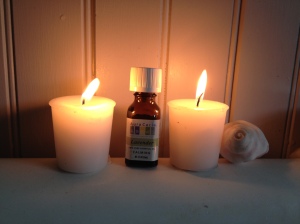 It is our hope that our readers have benefitted from the New Year, 3-month, Plan for Wellness. Here are seven painless and simple at-home acupuncture steps you can do to maintain good health and vitality. I recommend acupuncture and we had a wonderful guest blog post a few months ago that a lot of our readers thanked us for.
It is our hope that our readers have benefitted from the New Year, 3-month, Plan for Wellness. Here are seven painless and simple at-home acupuncture steps you can do to maintain good health and vitality. I recommend acupuncture and we had a wonderful guest blog post a few months ago that a lot of our readers thanked us for.
My naturopath also has me on a total “detox” regimen that includes castor oil packs, meditation (I use Rodney Yee’s “AM Yoga” DVD, or try Jon Kabat-Zinn’s wonderful collection of relaxation CDs), skin “sloughing” before shower (which entails roughing up your skin with a loofah sponge from your extremities toward your heart and encourages new cell growth), drinking plenty of water, regular exercise and daily yoga, counseling with a social worker or psychotherapist, weekly (free) REIKI and monthly massage visits, acupuncture sessions monthly, and physical therapy with integrative manual therapy-healing. A good attitude also helps. I regularly repeat to myself positive messages like:
“Don’t let this disease rule your life and get you down, but when you need to, ‘Ask for Help!’”
This simple YouTube mindfulness video by Jon Kabat-Zinn is wonderful, and Dr. Kabat-Zinn was one of the first to bring mindfulness into medicine!
The suggestions I receive from my naturopath are an attempt to enhance my body’s natural elimination processes through the digestive system, kidneys, skin, liver, and lungs. All are essential to help me optimize elimination with minimal aggravation while also undergoing specific treatment suggestions with my gastroenterologist. I have found this support team and naturopathic/acupuncture treatment to be extremely effective as an aid that can dramatically lessen the physical effects of inflammatory bowel disease.
These seven relaxation techniques are really easy to do at home. I do them before my shower daily! Foot massages are also very beneficial, which I do before bed with some moisturizer (I add a bit of organic apricot or sesame oil to the Pure Essentials moisturizer to thicken it up, and I also put cotton socks over my feet if calluses are bad), as well as candle-lit hot baths with lavender oil drops in the water.
- Brush your gums and tongue. Spend at least 5 minutes each time you brush (longer is even better). Set a timer because 5 minutes may seem like a very long time at first. The acupuncture points along the gums match with the entire body system, as does the tongue.
- Brush your scalp. Remember when moms insisted that we always brush our hair for 50 strokes? Turns out, there are hundreds of acupuncture points on the scalp itself. For a quick session, massage the governing vessel 20. This point is located at the very top of the head, the point of 100 meeting points, which enables you to access several channels at once. Spend time massaging your scalp with your fingernails and even while you shampoo.
- Push back your cuticles on your fingers and toes. Just the act of pushing back your cuticles stimulates acupuncture points that go directly to every muscle and tendon in the body, bringing on relaxation. Need to keep a small child quiet at an event? This works like a charm. Plus you can trace every finger front and back as well.
- Loofah your body. This is a hard sponge that softens with use. Loofah plants can be grown, and are much softer than those found at most department stores. (Note: when purchasing a loofah, be sure it says ‘loofah’ on the package.) Use the loofah wherever there is skin. There are thousands of acupuncture points all over the body. If you find a sore or itchy spot, spend extra time there. It is likely that it is an acupuncture point that needs stimulation. Electricity is accumulating there and stimulation via massaging or using a loofah disperses this accumulation. Before showering, use the loofah sponge to aggressively rub from the extremities toward the head, beginning with the arms, then working up from the feet. After you rub all the dead cells off your body, an invigorating shower further energizes you and allows for the stimulation of new cell growth.
- Moisten your nasal membranes. When you splash water on your face, keep water on your little fingers. Put your little fingers inside your nose and moisten all around. You do not need to sniff water up into your sinuses. Moistening your nasal membranes increases your chi (your body’s bio-electrical energy).
- Breathing exercises. Most of us are chest breathers, rather than abdominal breathers, so we tend to breathe shallow most of the day. On inspiration (breathing in), push your stomach out as far as you can. On expiration (breathing out), let your stomach fall back to neutral. This is very difficult to do at first without thinking about it. When you breathe with your abdomen it forces the diaphragm to drop and thus increases your lung capacity. This is why singers practice breathing so that they are able to sustain notes much longer. Breathing leads to more oxygen, more chi and more energy.
- Massage your face, hands, feet, and ears. You can do this yourself, but it is more relaxing and fun if done by someone else. These areas also treat the entire body individually.
(Grateful to Patricia S. Wesley, D.C. for her support)
Daily massage and stimulation will increase blood flow, help improve the effectiveness of your current therapies, improve mood, decrease inflammation, and promote healing.
Remember to think positive, and here is a wonderful quote and photo from the XIV Dalai Lama.
We like to hear from our readers, and thanks for helping spread the word about our book and recommendations!
—Dede, a Crohn’s disease/ulcerative colitis patient perspective—post surgical removal of ileum, large segment of Sigmoid colon, and fistula/granuloma mass—symptom-free for the past eight years, but still a Crohnie/uc-er by definition…
Happy Holidays from Dede & Jessica at Living With Crohn’s & Colitis!
This plan was developed as a guide for generating a treatment regimen. Just as each individual is unique, so too is their road to wellness. This 3-month plan is meant to be used loosely, so you should feel free to adjust each step as needed for your own recovery. Please consult your physician when beginning this program, and continue to visit your established team of specialists (naturopath, gastroenterologist, etc.) so that they can help you monitor your progress and make any necessary adjustments to the program.
As discussed in our book—and is a good idea to read the book before beginning this plan—treatments and lifestyle changes can occur in any order, but here we have provided a plan that will slowly and gently move you through your digestive problems and into wellness. Most patients will feel some positive changes as they progress through this 3-month plan and some patients may even become symptom-free.
The most important aspect of this step-by-step process for building health is that we are creating a foundation for wellness and building upon it, rather than trying to overwhelm the body by incorporating all changes at once. Taking new strides each week helps to keep you focused and motivated through the entire process. We know that change can be overwhelming, which is why we’ve created this program so that it can also be slowed down even further to incorporate new changes every 3 weeks and can be specifically tailored to your individual needs.
NOTE: All severe conditions and the need for surgery must be ruled out by your physician prior to starting this program. If initial acute symptoms are severe, they must be treated either with natural medicine or pharmaceutical medicines to provide relief while working on the underlying imbalances.
NOTE: Stress is a precursor to disease and flare-ups. If you are a parent of a child with IBD, or a patient or caregiver, try to help keep the holidays as stress-free as possible! (Easy for me to write this, as I woke up at 3:00 a.m. worrying about buying presents …. and planning a party! Yikes. But I am off to walk 4 miles this morning AND DO YOGA AND MEDITATE!!!
Weeks 1–2:
1. See the change and believe in the change! Visualize optimal colon health daily. See yourself happy, active, and vibrant in your mind.
2. Proper Mealtime Habits—eat slowly, and take your time preparing, shopping, and don’t overeat, or try new foods during the holidays!
3. Remove major dietary causes of inflammation—keep a food journal, and stay away from trigger foods!
4. Add only one supplement or herbal medicine, whichever best suits you. This may be an acute remedy for diarrhea, acidophilus, or any other supportive medicine—for example. I just bought a new supplement—turmeric—because I ran out.
5. Herbal teas: pick one of the teas that best fit your needs and drink daily. I choose Perppermint! Also Chamomile is a good stress reducer. Add honey for sweetening (NO SUGAR AT ALL!)
Weeks 3–4:
1. Continue previous points.
2. Add an additional supplement or herbal medicine—talk to your doctor or naturopath about Vitamin D, or Omega 3.
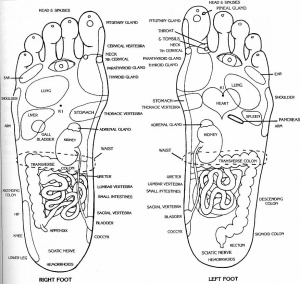 3. Begin the Tapping for Energy technique (in our book) or daily acupressure. Dede likes to massage her feet before bed, using a nice mix of moisturizer and sesame or apricot oil. It is amazing how much stress in in our feet and the acupressure points relate to organs in the body. It is a great routine to press gently on some of these points — the chart shows you were the bowel area is (also liver point is important to gently press).
3. Begin the Tapping for Energy technique (in our book) or daily acupressure. Dede likes to massage her feet before bed, using a nice mix of moisturizer and sesame or apricot oil. It is amazing how much stress in in our feet and the acupressure points relate to organs in the body. It is a great routine to press gently on some of these points — the chart shows you were the bowel area is (also liver point is important to gently press).
4. Experiment with adding more anti-inflammatory foods and spices into your diet. Last night, I made a fish curry with garnishes of bananas, raisins, chopped apples . . . yum!
Message me if you want the recipe. It was mild, not too spicy, and used Haddock filet.
Weeks 5–6:
1. Continue previous points.
2. Add an additional supplement or herbal medicine. I take grape seed extract when I feel a cold or flu coming on. Try a warm bath at night with lavender oil.
3. Begin to incorporate movement/exercise. Do this at least 3 times per week, but daily possible. This is VERY important…start slowly, but try every day. Begin with your mind—just change the way you think about exercise (like when you get busy at work or with life, don’t eliminate it!).
Weeks 7–8:
1. Continue previous points.
2. Incorporate daily nutritional powders into your diet such as spirulina, kelp, green tea, or acai powder—try these sparingly at first, and make sure nothing irritates (Dede does not use spiraling, but kelp and green tea really help keep inflammation at bay. An excellent overall nutritional supplement, but use the best brand and tell your doctor. Here is a nice article from Dr. Oz on acai powder. Dede has acupuncture once a month-another great thing to introduce—if it is too expense, find a “community-supported acupuncture” place to go, like a clinic. Dede’s acupuncturist gives her a discount ($55 per 1 hour session!) because she has a sliding scale. Acupuncture really helps!
3. Add an additional supplement, if needed. PROBIOTICS ARE GREAT, according to Dede, who takes 1/4 teaspoon of powder every day. Again, buy from Naturopath, or Metagenics is a good company. Dede uses “Synergy” brand, all flora.
Weeks 9–10:
1. Continue previous points.
2. Add an additional supplement if needed. Talk to your doctor about your magnesium/calcium levels—Dede takes a mag-citrate because she doesn’t have dairy in her diet. Plus, if you have been on steroids for treatment, you want to be sure your bone health/density is good, so it would be wise to talk to your doctor about having a test.
3. Incorporate mental and emotional support. This may be needed sooner in some individuals suffering from anxiety and depression contributing to their illness. Dede swears by “Talk Therapy,” and goes 2x a month. She tells her therapist everything about dealing with her disease, work, relationships, boundaries, stress, etc. THE BEST!
Weeks 11–12:
1. Continue previous points.
2. Add an additional supplement if still needing more support. Talk to your naturopath. Your electrolytes need to be balanced. Dede makes homemade chicken soup broth 2x a month. Dede loves being on a Paleo-like diet! NO SUGAR, NO GRAIN (can use Almond and Coconut flours), NO DAIRY!! This is the best! Use Almond mile, eat eggs and organic animal proteins (local chicken is good, beef—but make sure it is antibiotic-free and free range)
3. Incorporate colon hydrotherapy (castor oil packs 5 days per week or constitutional hydrotherapy treatments — details are in our book, along with tons of other lifestyle information! Dede loves her castor oil pack-when her abdomen is sore, she lies down with the pack and a heating pad, and reads, or meditates, or sleeps. Pain goes away!.
HAPPY HOLIDAYS!
Enjoy a stress-free New Years, and look forward to 2014! Remember, a positive attitude improves disease outcome, so “THINK POSITIVE!”
Since it is almost Thanksgiving, I thought I would write a post to wish everyone a happy, stress-free holiday, and try to help those with IBS, Crohn’s, and UC who may need some encouragement and advice.
We all know holidays can bring on the stress-inducing behaviors and hormones that cause internal signals to flare up in the body. When I was at the Mayo Clinic a few (short) months ago, I learned so much about controlling stress—make stress-reducing activities a priority, starting today, and leading up through the holiday season.
Your lifestyle structure is even more important here: daily exercise, gentle yoga, meditation, sleep, etc. Schedule appointments with professionals to help you lessen stress in your life: a talk therapist, acupuncture, massage (gift cards are good holiday presents for those you love!), etc. Do what makes you feel good about yourself AND relax! (I went to the salon yesterday for hair color!)
Tryptophan is one of the 10 essential amino acids that the body uses to synthesize the proteins it needs. It’s well-known for its role in the production of nervous system messengers, especially those related to relaxation, restfulness, and sleep.
I am now aware why I love turkey so much—I sometimes even crave it. I always feel more relaxed after I eat turkey, and this may explain why….There are many researchers who study the way tryptophan manufactures serotonin, a neurotransmitter that is found—guess where?—in the intestinal tract. Just about 90% of the body’s serotonin is actually found in the gut, so my gut tells me to eat it, and I am not even a biochemist!
Tryptophan has the ability to raise serotonin levels, too! Wow, who knew this? I love the fact that I can eat turkey and sample other holiday foods like nuts, seeds, bananas, pumpkins, squash, sweet potatoes, green beans with almonds, pearl onions (those sweet little ones, not the canned and creamed kind!) WITHOUT having a flare up. Also (again, who knew?!), Tryptophan also boosts the production of B3, and since I had a partial bowel resection in 2006, I need to keep track of my B vitamins (especially since my terminal ileum is completely gone, I have lost the capacity to fully absorb vitamin B12).
Everything I eat is sourced, and mostly bought from local farms. It is not that hard to do. For instance, our turkey is a Vermont-raised, free running turkey, and I picked it up yesterday from our local food coop. Potatoes are from here, also butternut squash, apples, pumpkins—are all from Vermont; cranberries are organic and from Cape Cod. I will be baking apples, too—delicious and easy. Some of us cannot eat nuts or cranberries, so avoid, but there is plenty to choose from!
Here are some tips: drink water before your meal to fill you up so you don’t overeat, take small portions, walk after the meal. If you have an ostomy, take extra supplies and a change of clothes to your hosts’ party. If you avoid sugar and alcohol, you will be less likely to flare up; also don’t try ANY food that is not on your list (remember the food journal from the book!).
On Wednesday/tomorrow, I will make some pies to drop off at our local Thanksgiving Day dinner for those less fortunate in our area—Don’t forget to do something to help someone else in need this week, and after. With all the holidays upon us, plan some special time each week to volunteer (soup kitchen, helping those who have been in a house fire, helping veterans, etc.). Thanksgiving was set as the fourth Thursday in November. This year, something amazing and historic has happened: After sundown on the second of Hanukkah’s eight days, we will also celebrate Thanksgiving. If you are Jewish, there is an even busier holiday!
I will post some recipes on my Facebook page! Be well, and breathe … A bit of dietary research unravels mysteries of cravings from this writer with uc/Crohn’s disease….Happy Thanksgiving & holidays everyone!
Good day to my fellow Crohnnie’s and UC-ers,
Holidays are fun—remember that!!! In the spirit of our favorite holiday when you have IBD, we are gearing up for a gluten-free, dairy-free, sugar-free, AND grain-free Thanksgiving!!! Yahoo! Can’t wait. Here is what we can eat: TURKEY!!! The best comfort food on earth (with lots of tryptophan in it that makes us feel good), sweet potatoes (yams) that are steamed and mashed with olive oil and a bit of melted canola butter on top, small sweet onions with canola butter, steamed carrots, cranberry sauce (unsweetened), as long as you can tolerate cranberries. Don’t try ANY new food over any holiday. If you go to a potluck, don’t eat, or bring your own food …. Remember to stay positive, get a lot of rest and exercise every day to clear your head. Start meditation, and volunteer at a local Thanksgiving Day dinner (I’ll be making some gluten-free dishes to bring to my town’s open dinner as a donation)….
Take care of yourself! Give back to others, and you will have a perfect holiday!
Here are some more of Dede’s “Living-with-Crohn’s & Colitis” TIPS—
Probiotic & Diet
For PROBIOTICS, look for a pure brand with a 50/50 blend of bifidobacterium and lactobacillus acidophilus. Perhaps you can find this brand: Metagenics, Ultra Flora “Synergy.” Take once a day, with or without food (depends on how you tolerate it). Keep that food journal, and note down any stress in your life, daily exercise, everything you eat. Don’t eat fried or spicy food—keep track, and eat small frequent meals. I have a really OCD technique: breakfast begins with tea and a dash of milk (the ONLY dairy I eat, and my ONE treat ;)), then add a bit of honey (again, buy in bulk and a pure brand). Cold cereal of almond milk mixed with bananas and cut-up melon (add nuts and raisins IF you can tolerate). Snack is peanut butter on carrots.
CHEW EVERYTHING really well!
Drink TONS of water with fresh lemon squeezed into it.
Drink TONS of herbal teas…I like peppermint
Lunch is tuna or chicken salad (use pure fresh, virgin, olive oil!), maybe chick pea humus and a handful of almonds on the side; snack is applesauce and peanut butter. Dinner is a grilled local beef/organic hamburger with steamed zucchini. No grain, no sugar, no dairy. I eat ALL the time and feel great on this diet. I don’t even crave sugar!
Good luck and stay positive. YOU CAN DO THIS!
RX, Flare—Where to begin…. Here are some lifestyle tips, from Dede, who has been in remission from Crohns for almost eight years…. Do not despair.
“There is a saying in Tibetan, ‘Tragedy should be utilized as a source of strength.’
No matter what sort of difficulties, how painful experience is, if we lose our hope, that’s our real disaster.”
—The Dalai Lama
Take control: hydrate, sleep, exercise, yoga meditation, daily…
Walk 1-4 miles per day
Sleep at least 8 hours per night (take powdered magnesium bicarbonate—Dede likes “Natural Vitality’s Natural CALM in the Raspberry-Lemon flavor, drink fresh-squeezed lemon-lime-flavored water all day long (carry glass water bottle with you, and the new ones are encased in non-breakable plastic or rubber)
Drink herbal teas—Chamomile, dandelion root, peppermint— and also Green Tea that has caffeine, but also comes in decaf.
Movement & Meditation
Start a gentle yoga DvD (Rodney Yee’s a.m. Yoga is wonderful), and set up a “yoga studio” in your house or apartment somewhere (mine is in the basement with an old TV, but I have made it my own with a little table and a small wooden Buddha, candles—it is peaceful and my own space).
This yoga will lead to guided meditation. Even 5-10 minutes a day improves patient outcomes! A local class or “sangha,” is a nice way to learn to meditate.
Watch Your Diet
Once you get in tune with your body, you can start to really tell if certain foods make you begin to flare and you can back off immediately and note in your journal to keep track.
Keep a list of safe foods, foods to avoid.
Body Care—It Pays to Be Beautiful!
Use essential oils to sniff daily. I like lavender oil in my bath, eucalyptus oil in the shower
Massage your feet every night before you go to bed. Use a nice moisture lotion (with lavender, if you like it), and I add organic apricot or sesame oil to make it thicker.
Take some “Natural Calm” magnesium powder each night in a hot glass of water before you go to bed… You will sleep better!
Massage the back of your neck—press with acupressure in the “still point” at the base of your skull—get a friend, or spouse, to help.
Speaking of….ASK FOR HELP! Don’t do what I did, which was to lie in bed and retreat from the world for days at a time…the only trip to the bathroom for a journey…. Ask for help—on Facebook, or pick up the phone.
See a therapist, once a month, or join a group for IBD, Crohn’s, colitis, or autoimmune disease.
Volunteer at a soup kitchen or homeless shelter, or environmental action group…. Altruistic behavior helps you to let go of stress.
Last, but not least, LAUGH every day! Watch the stupid pet videos… Or this goofy video my friend, Dodie, sent me this morning… She is going through cancer treatment, and she is very brave and a wonderful friend, who retains a sense of humor!
~~~~~~~
;))
It is amazing how much a positive attitude can help. In our book, there is a section when I am despairing and a doctor comes and sits with me and holds my hand—no kidding! He said, “Think positive.” Well, on that note, I want to write a post today about that and helping the body adjust to the changing season and of course living with IBD in general. I also want to share the news that I am writing a cookbook, called Living with Crohn’s & Colitis Cookbook (good title, too!)…my publisher is the wonderful Hatherleigh Press, which is distributed by Random House. I couldn’t ask for a better team! Publisher, Andrew Flach believed in this book from the very start, associate publisher, Ryan Tumanbing is always there when I need things, and my editor, Anna Krusinski is da Bomb!
My book with Jessie is a good overview and a way to understand how the body chemistry and immune response works. I am not denying the benefits of medication, but we do offer an alternative, and if you are someone who has to stay on meds, you can do both—no matter what, it is important to keep the body tuned and in a balanced state of homeostasis.
Getting a full work up from a medical professional is the first step—go to a specialist at a GI clinic (Dartmouth is the best in my area), and have a colonoscopy, blood work (really important as many patients are anemic due to blood loss, or low in B-12 as in my case), a physical exam (a patient will no doubt be embarrassed by this like I was, but this is a very important exam because the doctors can determine a lot when they examine the anus and rectum, and palpitate the abdomen—they could feel the mass in my case), and what is called enterography: a MRI or CAT scan (I don’t recommend CAT scans too frequently for younger people) will reveal areas of disease inflammation.
Crohn’s typically presents in the lower right abdominal quadrant (often confused with the appendix!) of the small intestine, but it can strike anywhere from the mouth to the anus. Colitis presents throughout the large intestine only. Crohn’s really cannot be cured, and has a tendency to skip to infect the next section of the bowel even after the diseased section has been removed (as in my case). Colitis can be cured through surgery if nothing else (drug therapy or naturopathic-holistic-alternative) works. They take out the large colon, and connect the stomach-duodenum-small bowel through a J-pouch internally, or an external ostomy bag. Not a great thing for anyone to have an ostomy bag; however I have met many people with colitis who don’t mind the bag at all, and love the fact that they are pain-free.
The Crohn’s & Colitis Foundation of America is the best organization! I love everyone there, and run in their half marathons with Team Challenge to help raise money for research; plus it is a community of fellow patients, young and old, and we are a surprisingly close-knit group. Join, and sign up for a walk and a support group (they even have a new college group!) as soon as you can.
The other thing to do, is have a poop sample tested (this is no fun, but can tell a lot—bacterial infections, or something called C-Diff). In addition to going to a GI clinic, make an appointment for a work-up with a recommended naturopath, a trained naturopathic physician with a four-year degree from a well-known college (Bastyr University, for example) and get right in there for a checkup and a plan of action. My naturopath did allergy testing to see if there were specific foods (most common culprits are wheat and dairy), that I needed to eliminate, and she ordered an endocrine hormone test to see if I may have had a hormone imbalance.
I also give a lot of credit to my acupuncturist who is trained in Chinese medicine, and I go once a month. It is all in our book, but make sure you stay on top of the disease and get regular check ups with your medical doctor to rule out any other complications. I had a dangerous abdominal fistula, that didn’t show up on the CAT scan and was attaching itself to another organ—sorry to bring in the drama, but IBD (Inflammatory Bowel Disease) can be life threatening. No question, it is vitally important to be proactive, especially as a parent.
My weight was so low, I was dangerously thin—ironic, because our society places such status on being thin! I am now a healthy 140 pounds, and I work hard every day to stay healthy. Once I get busy with work, and let things slide, I start to feel run down… I can tell right away! Being in tune with your body is very helpful—keeping a food and daily journal, getting some good private counseling, and doing stress reduction exercises (Tai Chi or yoga) daily is also a big part of managing the disease.
I think I have covered the basic tenets of my book with Dr. Jessie. Oh, one more thing, join the online groups— http://www.ihaveuc.com, and The Crohn’s Journey Foundation for starters, also Intense Intestines, Girls With Guts, the Crohn’s Forum, Healing Well, and others. We are a strong and awesome group—always there to support each other! Let’s face it, the doctors are so busy, they can’t spend and hour with each patient, and it is the patients themselves who are doing great research and offering support. If a doctor tells you stress or diet have nothing to do with IBD, find another doctor! Oh, and second opinions are a good plan as well.
I have eliminated SUGAR, and ALL grains from my diet and ALL dairy. It is awesome! I feel so much better… I eat baked chicken or grilled fish, locally-raised, antibiotic-free, grass-fed hamburger steak once in a while when my body craves red meat, all served with yummy vegetables on the side and tons of fruit and nuts and eggs… I take extra calcium-magnesium, along with daily probiotics, turmeric, Omega 3, Vitamin D, herbal adrenal support, extra vitamin C, and a good multi-vitamin (I buy only organic food and supplements—it’s more expensive, but then I don’t spend a lot of money on clothes and makeup!).
So that is the basic overview—I am always there for my readers, and want to offer as much support as possible!
Oh, this just in, Dede will be on The Doctor Oz show this coming Monday, October 14th, in a spot on how common bloating is. They found me through the Crohn’s-Colitis book on “Help a Reporter Ou”t (HARO), and asked me to show how hard it is to buckle my jeans when I am bloated, which is what “used to happen” when I ate too much dairy or wheat…now, I don’t have bloating much AT ALL! Watch the segment if you want a laugh 😉 as “laughter is the best medicine.” I don’t mind embarrassing myself to help others…
Be well, and take care of yourself… don’t be afraid to ask for help!
Dede
Below, you can see some recent dinners… My husband and I have a grill we use a lot, and here you can see grilled marinated swordfish (fresh ginger root, white wine, wheat-free tamari, lime, and a dash of brown sugar for the marinade and let sit for a half hour before grilling) with grilled garden-fresh small eggplants (some people may have trouble with seeds…always introduce new foods slowly and note the reaction by your body in your journal right away….like I tried polenta this summer….noooooo! Not good for me, but may not bother someone else—we are all different!), and baked chicken with a sesame glaze (it was so good!) and steamed broccoli.
Greetings from Vermont. I am the co-author of Living With Crohn’s & Colitis: A Comprehensive Naturopathic Guide for Complete Digestive Wellness (with a nationally-known naturopath, Jessica Black, ND). Our book has helped so many people afflicted with Inflammatory Bowel Diseases, part of the growing auto-immune diseases that cause diarrhea, bloating, nausea, vomiting, and cramping. These inflammatory bowel diseases, and other auto-inmmune disease are on the rise exponentially across the world, especially in the developed countries where processed food is available.
Think about it: There are certain behaviors that cause body/mind stress: We address this in the book, but I want to tell you that I am a patient/survivor of a stress-induced flare-up in 2006 that almost killed me. On my 5 foot 8 frame, I weighed 117 pounds. I spent a month at Dartmouth Hitchcock Medical Center. I was 45 and very sick, with 3 children at home and a business to run.
Stress was the way I worked, and I was on autopilot without taking time for myself. That has all changed, and I have been in clinical remission for the last 7 years! Let me tell you more….
As many readers know, I went to the Mayo Clinic in Rochester, Minnesota this past May to have a complete second opinion. I spent two days of my weeklong stay, at the wonderful stress reduction clinic.
~
Here are some of my tips gained from my research, and how I try to keep my disease in remission:
STRESS
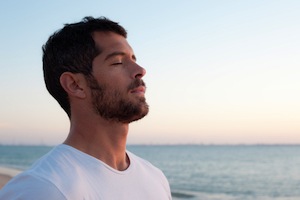 A lot of us have low level stress. Most of us don’t live in the hyper-aware world, and we suffer the autopilot behaviors that contribute to what I call “the slow burn of stress response.” Our heart rate and blood pressure might be elevated, and our breathing and muscle tension is like this — shallow breathing and knots in muscles. There is an area at the base of the brain called the amygdala. This is the seat of our emotional reactions, or “flight of fight” response to stress. Many Americans live with this elevated, but low level elevation daily… a little bit of “Flight of Fight” stress is really okay, but not on autopilot.
A lot of us have low level stress. Most of us don’t live in the hyper-aware world, and we suffer the autopilot behaviors that contribute to what I call “the slow burn of stress response.” Our heart rate and blood pressure might be elevated, and our breathing and muscle tension is like this — shallow breathing and knots in muscles. There is an area at the base of the brain called the amygdala. This is the seat of our emotional reactions, or “flight of fight” response to stress. Many Americans live with this elevated, but low level elevation daily… a little bit of “Flight of Fight” stress is really okay, but not on autopilot.
Look at our brains — In our pre frontal cortex, there is an area responsible for relaxation, and it is not easy to stimulate and not an adrenal release, as per the amygdala part of the brain.
~
First we need to be aware of this pre frontal cortex We have to explore our own behaviors and habits, break out of autopilot, and participate in a personal practice. There are some things you can’t control, like weather or traffic jams; however there are some things we can control, and are important… An example from the workshop was if you have an overbearing mother (don’t worry, Mom, not YOU!), and how you need to take care of yourself first and use the excuse of health, and scale down. Awareness helps, and limit your exposure to stressful people and situations. It’s a process… keep boundaries in your mind, but “caring boundaries.”
Unhealthy responses to stress in our life are anger, etc. It is important to develop a healthy exercise routine, learn and use relaxation techniques (see below), and take care of yourself. This neural pathway gets easier and easier to tap into (see diagram at right). For example, my body knows and relaxes immediately when I walk into my home “yoga area” where I have a TV, and a carpet with a yoga mat. I use Rodney Yee’s DvD, “AM/PM Yoga,” and do the exercises every day… it gets easier and easier to tap into the relaxation part of my brain, and it is replenishing.
After a stressful day:
- Call a friend
- Laughter
- Read a book
- Knit
- Walk
- Walk the dog
- Ride a horse
- Volunteer at a soup kitchen
- Play the piano
- Do some gardening
In order to break out of autopilot, do a few things on this list on a regular basis.
~
Benefits: Concentration, Problem solving, Sleep…
We need to be participants: This involves “letting go of the wheel,” loosening your grip, and takes time and experimentation.
In the wonderful workshop, our instructor gave the analogy of flying on an airplane, and how you put the oxygen mask first, then help the child.
Talk therapy is another way to help relinquish the autopilot lifestyle… A regular monthly session with a trained, recommended therapist will do wonders for helping to care for yourself, establish boundaries, and feel safe.
Evaluate your stressors and prioritize your time, as you move forward in the break from autopilot.
Give yourself permission eg., “Be kind to yourself and ask for help.”
Often we don’t think about our career as a choice made for healthy reason, and it might be time to reevaluate what we do for work.
It is important to spend time with friends, develop hobbies…. Hanging out with people who make me laugh is a goal. A hospital study involved a control for two groups with the same malady: One group watched funny movies every day, and got out of the hospital faster.
It’s a process, and it is important to practice positive self talk.
—-
Start a simple practice of Tai chi and chi gong
Walk around with a gentle smile on your face and try to share it with strangers—you use less muscles and tension when you are not frowning, which can contribute to an overall sense of well-being and a way to focus on releasing the internal stress caused by being on autopilot…
I have found this “small smile” technique that is practiced by Amit Soud, MD, the head of the Eastern Medicine Section of the Mayo Clinic to be essential as a way to lessen internal stress.
~
TAI CHI AND CHI GONG: These ancient exercises are easy and relaxing, often available in small towns across the United States. For example:
We breathe with about 40% of our lungs. If we can learn to take slow diaphragmatic breaths, we can effortlessly lesson our stress levels. These exercises are the foundation and essential for relaxed breathing.
A simple exercise I learned at the Mayo Clinic:
Take in a slow deep breath,
and fill your lungs so even your belly sticks out;
hold for a couple of seconds;
pretend you have a lit candle and exhale
so that the candle flickers.
Note to reader: it might take 8 weeks or so to start seeing results.
On July 21st, Brattleboro, Vermont resident, Dede Cummings, ran the Napa-to-Sonoma Wine Country Half Marathon with Team Challenge New England to raise funds for the Crohn’s & Colitis Foundation of America (www.CCFA.org). This was her second Half Marathon with Team New England, and there were over 3,500 runners competing, with 672 from the CCFA.
Cummings ran to raise research funds for the CCFA, whose mission is to find a cure for Inflammatory Bowel Diseases and improve the quality of life of the 1.5 million American adults and children who suffer everyday, with a time of 2-1/2 hours and she placed in the middle of the racers on race day.
Since she is from Vermont, she ran with Team Challenge from New England, and the group wore “Boston Strong” T-shirts. Team New England raised the most money of all the teams, over $400,000. The total money raised for the event was over $2.4 million dollars of which 80% goes to research. There were teams from across the United States, running to raise money for the Crohn’s & Colitis Foundation of America.
Cummings also ran for Ryan McMahon, a former team challenge runner who was injured in the Boston bombing. She is now part of a group called Run for Boston (#runforboston), which is motivated to raise awareness for running as well as for the increase in inflammatory bowel disease worldwide.
According to Cummings:
At mile 12, we turned right and entered the small city of Sonoma. At this point people were lining the street, and urging us on, which was great. Both of my calves cramped up pretty badly, and I was kind of nervous. I could see the finish line ahead of me, and I thought I might have to sit down and not finish! I have to admit, I did get a little choked up when I crossed the finish line, and I felt really proud of myself for living with Crohn’s disease, yet still living my life to the fullest even after surgery to remove a portion of my small and large intestine.
She is still trying to make her fundraising goal—with an extension until August 21st.
The website address for on-line donations is: http://www.active.com/donations/fundraise_public.cfm?ckey=napaNE13&force_a2=y&key=TCNE_Napa13DCummin1
Donations can still be made using this website,
or a check made out to CCFA can be mailed to her
at 34 Miller Road, Brattleboro, Vermont 05301.
My second Team Challenge Half Marathon was a wonderful event! We arrived on Friday, and Saturday morning I met up with my old college roommate, and we went out to Point Reyes National Seashore.
The night before the race, we had a pasta party, and two inspirational speakers living bravely with IBD (inflammatory vowel disease) spoke— Saskia Madison and Michael Ginzberg. Since I am from Vermont, my state is too small to have a state team, so I am on Team Challenge from New England. We wore our special “Boston Strong” T-shirts. Team New England raised the most money of all the teams, over $400,000.
I also ran for Ryan McMahon, a former team challenge runner who was injured in the Boston bombing. I am part of a group called Run for Boston (#runforboston), and I am motivated to raise awareness for running as well as to raise awareness for the increase in inflammatory bowel disease worldwide.
There were teams from across the US to raise money for the Crohn’s & Colitis Foundation of America: 2.4 million was the total, of which 80% goes to research. I’m quite proud to be a part of this wonderful organization.
Race day, we got up at 4:30 a.m. to have breakfast and meet the bus to take us to Napa. We all congregated at a wine vineyard there — and there were over 3,500 runners—630 were from all the Team Challenge state chapters.
Before the start, people lined up along the vineyard road, and when the gun went off it took a long time to get moving — especially back where I was pacing myself at 11-12 minute miles!
We finally got moving, and took a left for the first leg of our route that went uphill pretty steadily for around a quarter mile. At the crest of the hill, I was amazed to see a long line of brightly-clad runners as far as the eye could see.
On either side of the road and the mass of runners, there were rows and rows of grape vines. In the distance, as the morning fog was rising, I could see the Mayacamas mountain range rising up from the floor of the Napa Valley.
There were mile markers, and water stops along with port-o-potties along the way. It was so pretty with the grapevines, and some beautiful old wineries, that didn’t really seem too arduous.
By mile 6, I ate one of my Cliff bars, and started to feel a little tired. But they had live music, mocha shots, and Gatorade, so it wasn’t too bad.
I just kept a really steady pace, and I listen to a lot of music, and that really helped my motivation.
Around mile 10, there was a stand on the side of the road, and two men were giving away glasses of Guinness beer.
At mile 11, one of my coaches, Dave, ran with me for a while and that was wonderful. The coaches for team challenge are amazing!
Soon after, there was a place where you could get glasses of wine, and that was pretty fun, but I didn’t get any— for fear of getting a headache!
At mile 12, we turned right and entered the small city of Sonoma. At this point people were lining the street, and urging us on, which was great. Both of my calves cramped up pretty badly, and I was kind of nervous. I could see the finish line ahead of me, and I thought I might have to sit down and not finish!
When I was within a few hundred yards from the finish, a coach from Seattle named Chris came along and ran with me — he could tell I was really pretty exhausted.
He was very calm when he told me to just take it easy and run slowly to the finish line, and then walk it off, which I did.
I have to admit, I did get a little choked up when I crossed the finish line, and I felt really proud of myself for living with Crohn’s disease yet still living my life to the fullest.
I’m still trying to make my fundraising goal—I have until August 21st and it’s a great cause!
I met so many amazing people through Team Challenge, many of whom are a lot sicker than I am. It is really inspiring AND fun. I really recommend this!


